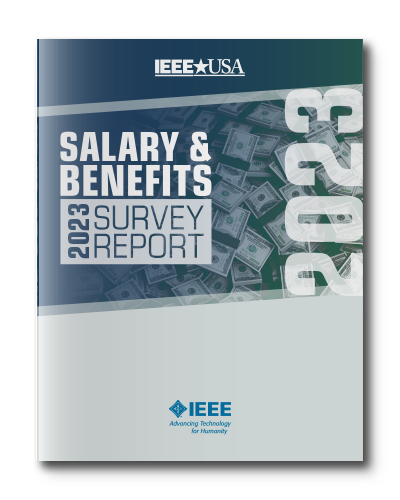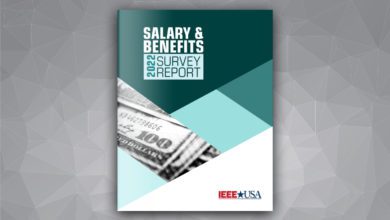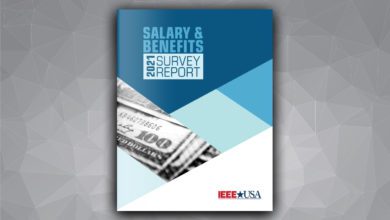
IEEE-USA has released its annual salary and benefits survey report of members showing that median primary income rose 5.6 percent from 2021 to 2022, behind the inflation rate. The report noted that “real primary income peaked in 2020, and has fallen the past two years, as high levels of inflation have exceeded pay increases.”
Survey responses indicate that the gap between salaries of men and women narrowed (though still significant); while the gap between salaries of White (77 percent of respondents) and Black (4.6 percent) engineers, grew. Asian or Pacific Islander respondents (11.6 percent) had the highest median and top decile salaries.
The 66-page report offers a broad array of information on salaries in the engineering field, and how they vary — as a result of years of experience, field of expertise, geographic regions, sex, race, geographical areas, and other factors. The report provides critical information for someone in HR determining prospective offers for new or experienced hires; for managers evaluating whether salaries of their team are competitive; or for individuals actively seeking a job or who just want to benchmark their current salary or project future earnings.
The 2023 Salary and Benefits Survey Report is available from the IEEE-USA Shop for $125 for members; $225 for non-members.
Published annually since 1977, the Report reflects the responses of 6,102 IEEE members (3,992 of whom are employed full-time in their primary areas of technical competence, or PATCs.) Of the respondents: 28 percent held doctorates, and 37 percent had a masters (22 percent in engineering, five percent in business, and 10 percent in other areas).
The report is organized into sections, and includes an executive summary; a profile of survey respondents; income statistics; regression models for salary benchmarking; responses to questions on benefits and satisfaction with work; salary time series data (1994-2023); and notes on methodologies. It also includes numerous exhibits presenting the total number of responses, as well as lowest decile and quartile results, median response, and highest decile and quartile responses.
The report shows that moving into management resulted in a clear boost in income with managers, on average, earning $33,000 more than all respondents. “As usual, members whose roles emphasize management and administration lead all others in compensation. General management earned a median of $202,363 in income from primary sources, while technical management earned a median of $198,000.”
Other top-line results of the survey show:
- The gap between women’s and men’s salaries, among those working full time in their PATC, shrank by $7,100 — but the difference remained significant, at $26,800.
- The salary gap between Whites and Blacks increased in 2022. Overall, Whites earned $21,500 more than Blacks. This gap is $7,000 higher than in the previous year’s report.
- Those specializing in Communications Technology continue to receive the highest median earnings ($192,000); while Energy and Power Engineering earn the least ($150,000).
- Mirroring the continued tight employment markets in general, this year’s report indicates a lower level of unemployment compared to last year. While less than one out of ten respondents are actively seeking new employers, managers should note they “would listen to offers.”
- Salaries in the IEEE’s west region were higher than the others; and the median salary was a full $45,500 higher than in the central region, which had the lowest median income ($150,000).
- Respondents with Ph.D. and MBA degrees earned the highest primary incomes at $186,000 and $185,000, respectively. Those holding an MSEE or MSCE reported a median of $177,187. BSEE or BSCE degree holders earned a median income of $151,900.
- The top states for median income are California, Oregon and Arizona ($181,000, or more). The bottom states are Nebraska, Arkansas and South Carolina ($122,000, or less). (Some states were not included, due to the low number of responses.)
- Median income varies by employer type, with nonprofit institutions and private industry (defense and non-defense) compensating the most; while educational institutions, and state or local government, compensate the least.
As regards years in engineering, the report concludes, “As in the past, results conform roughly to the classic maturity curves of engineering compensation — in which values rise regularly from entry-level to roughly the 30-34 years’ level — but flatten, or decline, thereafter.”
Engineers indicated they were generally happy with their careers and that “a good salary ranked most important, followed closely by long-term job stability.”







